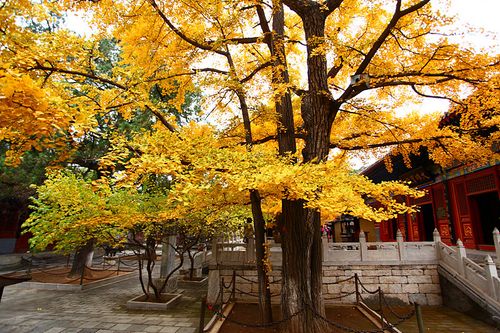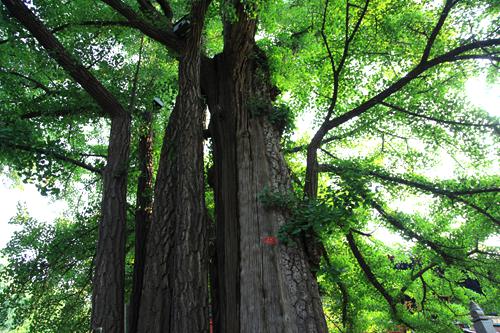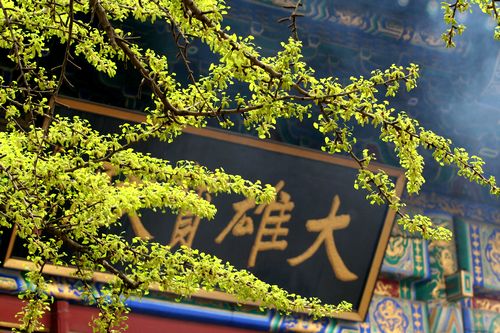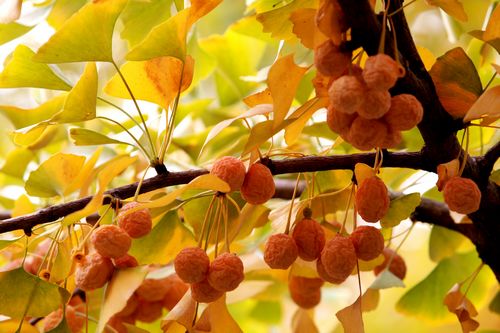6.The Male and the Female Ginkgoes (One of the Three Wonders of Hongluosi )

There are two ancient ginkgoes in front of the Grand Buddha Hall, the female one in the east and the male one in the west. The female one is more delicate and shorter while the male one is taller and stouter. The male one is more than 1100 years old and over 30 meters high, the trunk being 7 meters in circumference. Despite its great age, it is flourishing with vitality. Every year in spring, the male ginkgo blooms with little faint yellow flowers but bears no fruits in autumn; the female tree does not bloom in spring but is overburdened with fruits in autumn. Thus, people consider them a perfect match. Therefore, they are called couple tree. An old Chinese saying goes that “A single tree cannot make a forest”. However, the male ginkgo is gradually producing a forest as a couple of branches grow straightly upwards from its root. These branches have a legend, too. It is said that every time when a new dynasty was created, the male ginkgo would grow a new branch from its root. Now, there are ten branches and one trunk. The ginkgo trees shoot tender leaves in the spring, produce green shades in the summer, and decorates the Grand Buddha Hall with golden leaves in the autumn. As a relic plant, ginkgo is a living plant fossil which can only be found in China and one of the oldest tree species in the world, endowed with high value of research and appreciation. The male and female ginkgoes are also considered one of the three wonders of Hongluosi.

As ginkgo grows slowly, there is a saying goes that “If one plants a ginkgo, the fruit would be reaped by his grandson.” Therefore it is called “grandfather and grandson” tree. As the shape of its leaves resembles the foot of the duck, it is also named duck foot tree.





